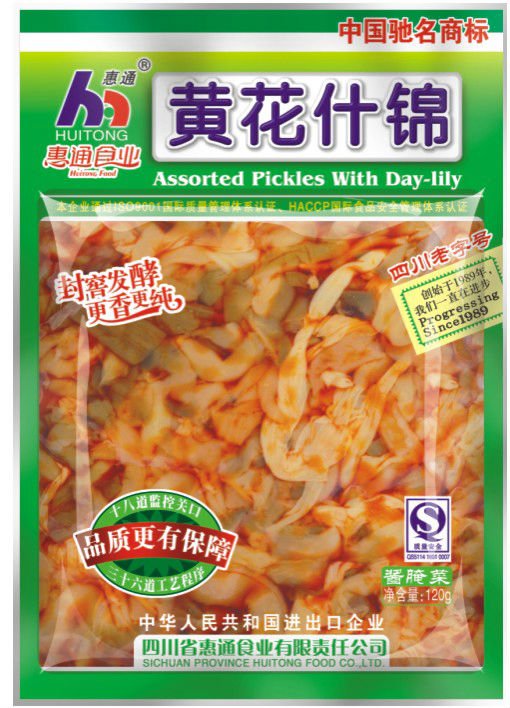I had to spend a long time searching through Asian markets to figure out what ingredients I should be using since I don't speak or read Mandarin, and my first Chinese cookbook had the right names in Mandarin, but the English translations were a little iffy. Now that I've figured them out here are pictures of what to look for and possible substitutes.
Black Fungus (Cloud Ear):

Black fungus comes dried, and a small package yields a shocking amount when re-hydrated; always start with a small handful when re-hydrating. This adds a nice texture and bulk, but very little flavor, so it can be omitted. It's cheap in Asian markets, but significantly more expensive on Amazon; either way a bag will last a long time.
Chili Bean Paste (Doban Djan, Broad Bean Paste with Chili, etc.):

This is a fermented paste of soy beans and chiles. It's rich, salty, and spicy with the kind of depth of flavor you only get with fermentation. It comes in jars carrying a lot of similar names, each with it's own distinct taste. You'll find multiple varieties in any Chinese market, but the Lee Kum Kee brand can be found in the international section of some major grocery chains. Chinese soybean paste, sometimes also called sweet bean paste (be careful not to get red bean paste) can be substituted if you want to cut back on heat or in a pinch you can use Korean Doenjang.
Chinese Black Vinegar (also known as Chinkiang or Zhenjiang vinegar):
This is an aged rice vinegar that's fairly sharp but has some depth and caramel notes. Bottles of this often have yellow labels on them, and it is available on Amazon, though it will be more expensive than at Asian markets. You can use plain unseasoned rice vinegar as a substitute, but you'll lose something.
Chinese Pickled Vegetables (with day lily):

I found these when I first started making Dan Dan Mian and had no clue what I was looking for, but it was a happy accident since I found I really like them, and I add them to the dish to up the vegetable content. It's a mix of things like day lily and cow pea, but otherwise I know next to nothing about it; I've always found it in plastic pouches, but I've seen jars that might have been similar. It's slightly spicy, not heavily pickled, and adds a nice crunch.
Fermented Black Beans (Preserved Black Beans, Douchi, and several other names):

These are actually not black beans as thought of in US, but rather soy beans that are fermented and dried; they are rich, salty, full of umami, and will add depth to dishes like ma po tofu. It can generally be found either in plastic pouches or cylindrical cardboard containers. Black bean sauce can be found even in the international section of some major grocery chains, and while it can be substituted it contains other ingredients. The fermented black beans (not the sauce), will keep indefinitely at room temperature in a sealed container.
Shaoxing (Shaohsing) Rice Wine:

A rice wine, but completely different from Japanese sake, and the two are not interchangeable. Bottles typically have red labels, and it is available on Amazon, but for significantly more than at most Asian markets. Dry sherry is usually listed as a substitute, though it does change the flavor noticeably; it can often be left out, but you'll notice a difference and you'll likely have to adjust seasoning as the cooking wine is sodium heavy.
Sichuan Pepper:
:max_bytes(150000):strip_icc():format(webp)/__opt__aboutcom__coeus__resources__content_migration__serious_eats__seriouseats.com__recipes__images__2010917peppercorns-306c643adaaa411e81ab149a5a47e96a.jpg)
This isn't actually a type of pepper, but rather the bud of a type of prickly ash. It has a slightly citrusy flavor but with a numbing quality; if used in excess you'll end up feeling like you've had a dose of novocaine. It's available on Amazon and in any Chinese market. There really is no substitute, and while it can be left out (it actually wasn't legal in the US for a long time due to a possible agricultural pest issue) you will definitely notice a difference in flavor.
Soybean Paste/Sauce (aka sweet bean paste):
This comes in jars often right next to chili bean paste/sauce in Asian markets, but doesn't contain chiles, so it'll be a dark brown instead of red-brown, but with the same richness and depth. I often use chili bean paste instead because I like it spicy and because soybean paste can be harder to find. Korean Doenjang can be used as a substitute, but NOT Thai soybean sauce.
Tianjin Preserved Vegetable:

Tianjin preserved vegetable (named after the city Tianjin) is pickled cabbage heavy on the salt; it is often soaked in water to cut the salt before being included in a dish. While it can be found in plastic containers, the most common way I've found it is in a ceramic jar as in the picture. It can be found on Amazon, but is significantly more expensive than the few bucks you'll pay in an Asian market where it's a common ingredient. It can be used interchangeably with Ya Cai, but I would much rather use the Ya Cai when available.
Ya Cai:

Often seen as Yibin Ya Cai or Sui Mi Ya Cai, this is a type of pickled mustard green. I've usually found it in foil packages as above, but it also comes plastic; I prefer to get the smaller foil packs as they generally have enough for one recipe, but larger packs freeze well once opened. It can be found on Amazon, and for not much more than Asian markets. Substitute Tianjin Preserved Vegetable if you can find that but not Ya Cai, but make sure to rinse or briefly soak the Tianjin Preserved Vegetable to reduce the salt .